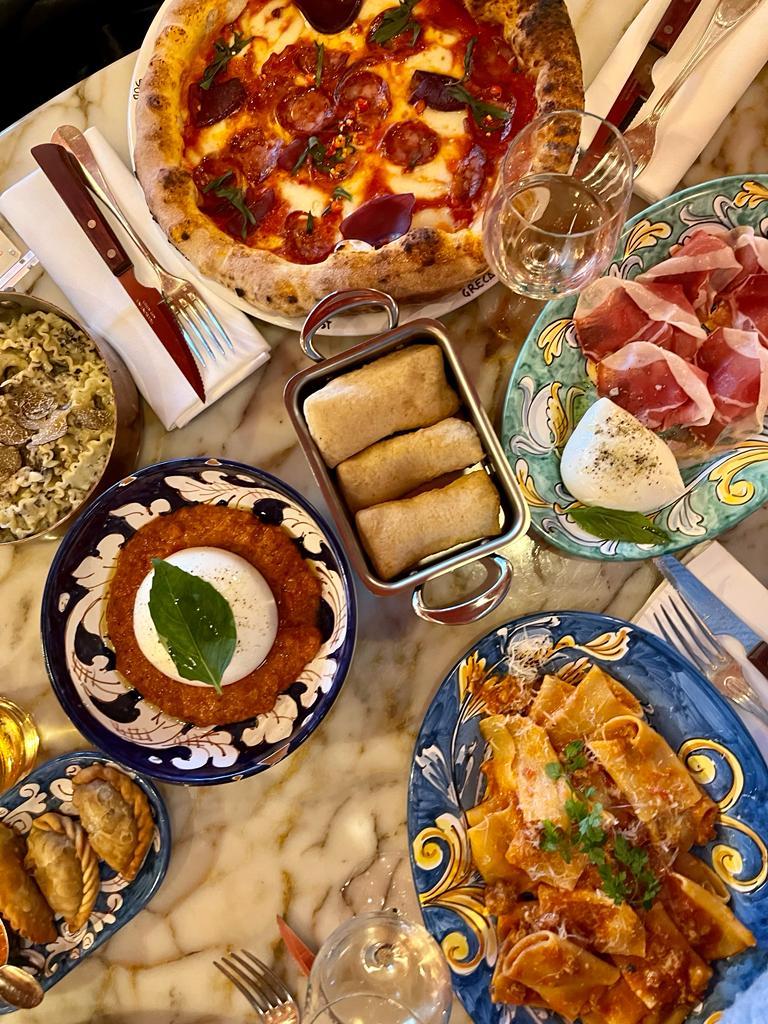Pasta/ Basta
Credits
WORDS Johanne Björklund LarsenItalian food has always been THE food of my heart. Bolognese, caprese, spaghetti, pizza, ravioli, tiramisù, lasagna, sorbetto, ossobuco, gelato, ragù,… the list of amazing Italian dishes is endless and just listing them makes my mouth water, a sentiment I think almost anyone who gives a d*mn about food agrees with
This love for Italian cuisine has been ingrained in me for as long as I remember. Long before ever having visited the country, I had a pink-coloured, romantic vision of Italian food and, by extension, the country that was the home of these magical dishes. A meal just didn’t really count if it didn’t include a form of pasta. Potatoes, rice, couscous – sure, they were ok, but compared to the allure of pasta, they fell short. This obsession has carried on into my adult life, and though my food habits nowadays include a more varied flavor palette, a good plate of pasta is still hard to beat.
Like the ways my bond with the cuisine has endured, so has the rose-colored Italy in my mind very much remained the same, largely untouched by the country’s complex history and politics. No matter what post-fascist leadership is in place, for some reason this rose-colored tint remains. And there lies a big danger.
Many regions worldwide wrestle with shifts toward the far right, a struggle Italy has been fighting with since decades. As part of populist far-right movements campaigns have attempted to weaponize Italian cuisine, using it as an argument to show how immigration poses a threat to traditional Italian dishes – and by extension Italy. One example of this, was when pope Francis in 2019 came under attack for serving pork-free lasagna at a lunch for the poor of Rome, an event held to mark the World Day of the Poor. Fabio Parasecoli, a professor of food studies, refers to this phenomenon as ‘gastropopulismo’. It underscores how food has evolved into a practice and a language that carries the weight of national identity and global issues. Yet, what the populists tend to forget is how these dishes they praise as “traditional” often are results of foreign influence from more or less distant times: spaghetti is of Chinese origin and tomatoes as well as corn (the base product of polenta) were introduced from the Americas. The sicilian staple pasta con le sarde is a result of Arab influence during Muslim domination of the island during the 9th Century and sorbetto, another Italian stable, has an Arabic origin.
Just like Italian cuisine extends beyond a plate of pasta, we have to face the fact that the romantic notion of Italy is, after all, just a fantasy.
Like other countries, Italy has weathered its own transformations, and like any other modern nation it is a multifaceted facing it’s own struggles,. When we get stuck romanticizing an idea we forget that the world we dream of is simply a fantasy and leaves out big parts of the actual reality.
Few other countries’ identities are as intertwined with their culinary dishes as Italy’s. While this symbiotic relationship is undoubtedly something fascinating, it also comes with its own challenges. On one hand, Italy boasts a venerable gastronomic heritage that deserves celebration and preservation. On the other hand, this deep association can stifle progress when it becomes a fixed identity imposed by others. How can you move forward when you are continually pigeonholed?
While we should unquestionably celebrate culinary artistry, we have to avoid confining a culture within its stereotypes or iconic elements. Like any nation, Italy grapples with intricate layers of reality beyond its culinary renown. The tapestry of daily experiences extends far beyond the enjoyment of a pasta dish. Outsider perspectives often oversimplify a nation’s identity for the sake of familiarity, but we have to give it a chance to reveal its unadulterated self.
The magic of Italian food – as well as any other cuisine in the world – is not only rooted in its flavors but also the fact that it is literally physical manifestations of the cross-cultural encounters humans have always engaged in. The true power of food lies in its unique ability to unite and combine unexpected elements to create something fantastic.
Recognizing this doesn’t diminish the splendor of a remarkable dish; rather, it invites us to appreciate it in its true context.





